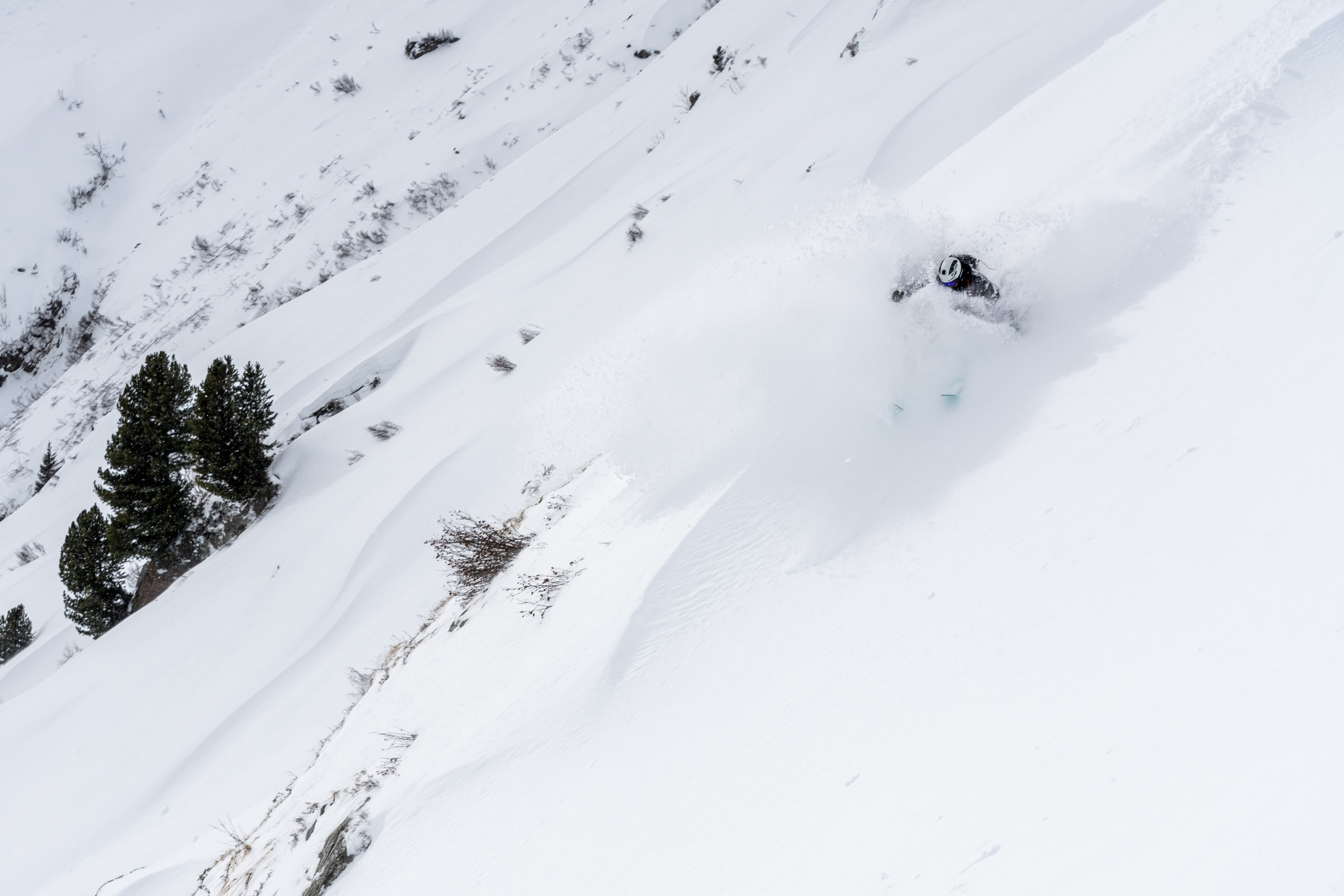
Event News
HighlightClinics & Classes
Arc’teryx Academy: Great Start for the Freeride Edition
For the past decade, the Arc'teryx Academy has educated mountain enthusiasts in their summertime pursuits. On 18-20 February 2022, the Academy's first winter edition with a focus on freeriding took place in St. Anton am Arlberg. Judging from the happy faces on participants and coaches alike, we expect to see many more editions in the years to come.
"You need to leave your comfort zone behind if you want to improve." In accordance with that wisdom, the Arc'teryx Academy chose the a fitting playground for its first freeride-themed edition. The weather and conditions were anything but comfortable: rain at high elevations on the day before, then cold temperatures, high winds, a mix of clouds with a few sunny spots, plus some fresh snow from Friday to Sunday. Nevertheless, the Arlberg region's famous terrain and reliably deep snowpack guaranteed that almost every participant returned satisfied from the whirlwind weekend of courses in the mountains around St. Anton.
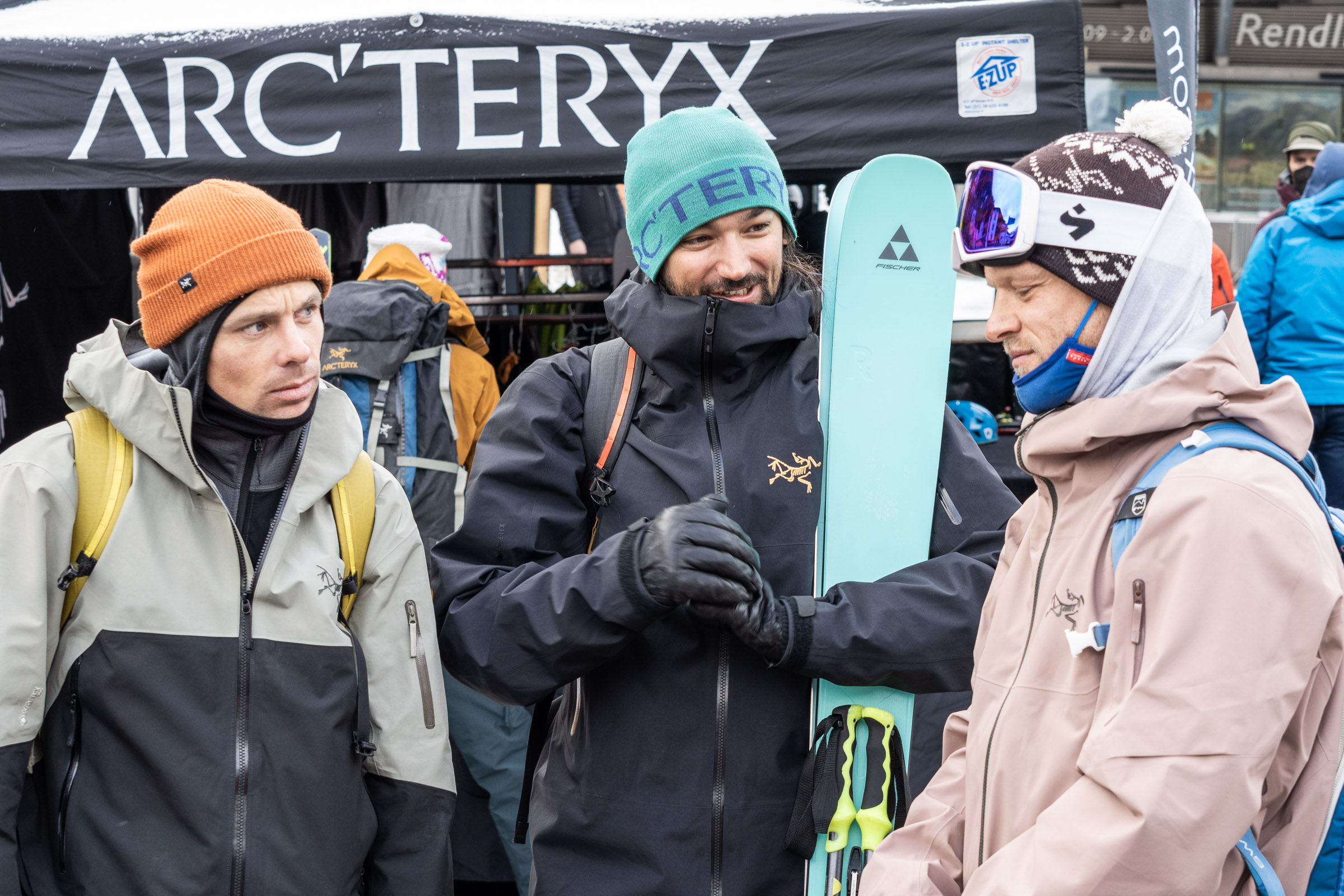
Guides and athletes meet in the event area before the clinics begin.
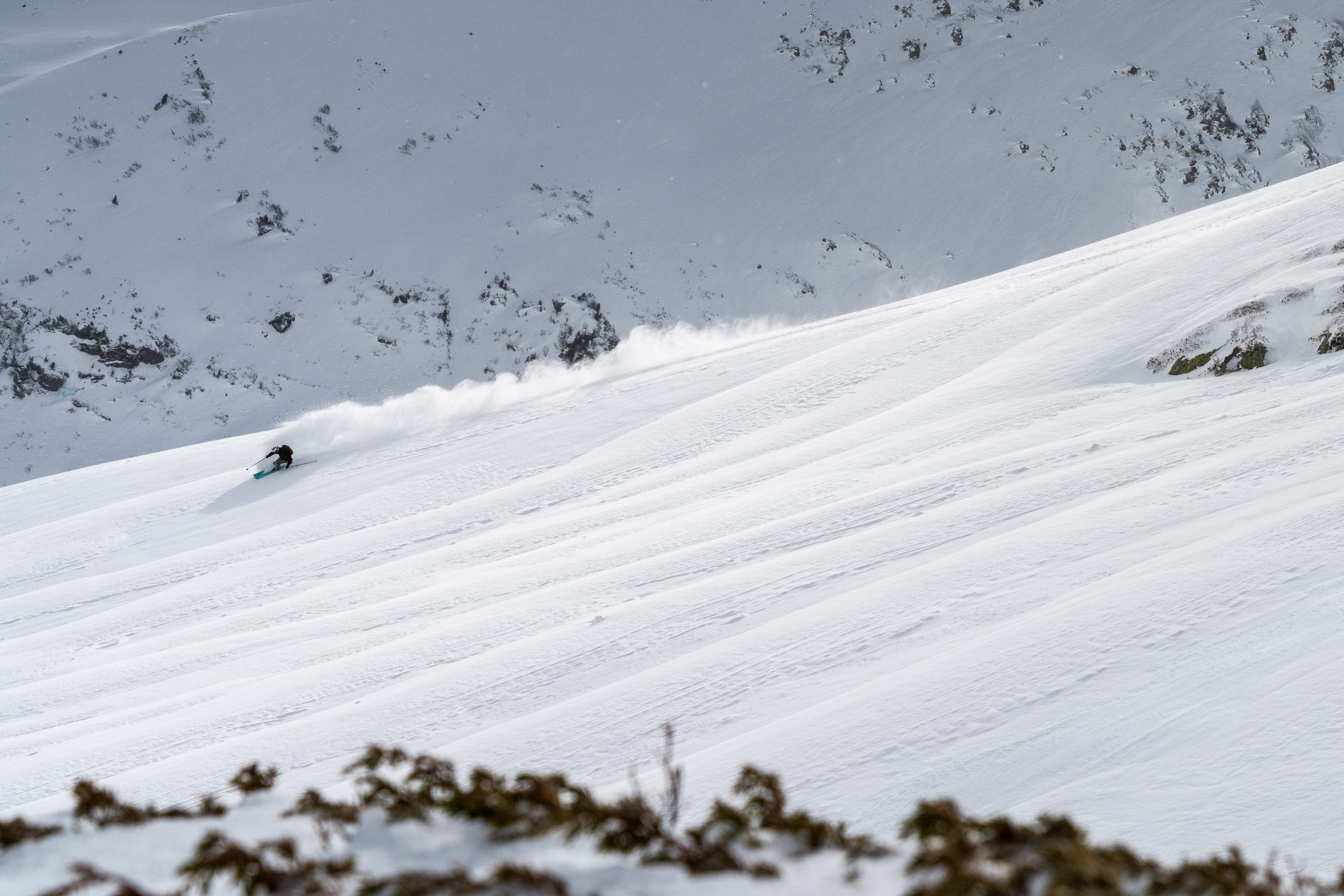
Despite swings in temperature leading up to the event, the snow conditions weren´t as bad as they could have been. Joi Hoffmann finds some cold snow.
The Arc'teryx Academy's well-established concept has already made the summer edition in Chamonix a staple of the event calendar for mountain sports enthusiasts around Europe. At Academy events, the Vancouver-based outdoor brand provides training courses from outdoor professionals as well as its huge roster of top-class athletes—many of whom are certified mountain guides themselves—offering the public the possibility to learn from the best. With the debut of the freeride Academy in St. Anton and a backcountry Academy in Jackson Hole, they’re now implementing the same concept in winter.
Instead of classical alpinism, the theme of the event in St. Anton was freeriding, and the variety of courses offered was simply astounding. You could choose from fundamental classes in avalanche assessment, emergency rescue or on-mountain first aid, all the way to expert courses in ski mountaineering that addressed techniques like crevasse rescue. There were several different kinds of freeride and touring-focused offers, from general skills for every riding level to more specific topics like environmental awareness, terrain choice or group dynamics. Each course took a full day, so you could choose either two courses for the weekend, or spend two days on a single option if you were after a very specific experience.
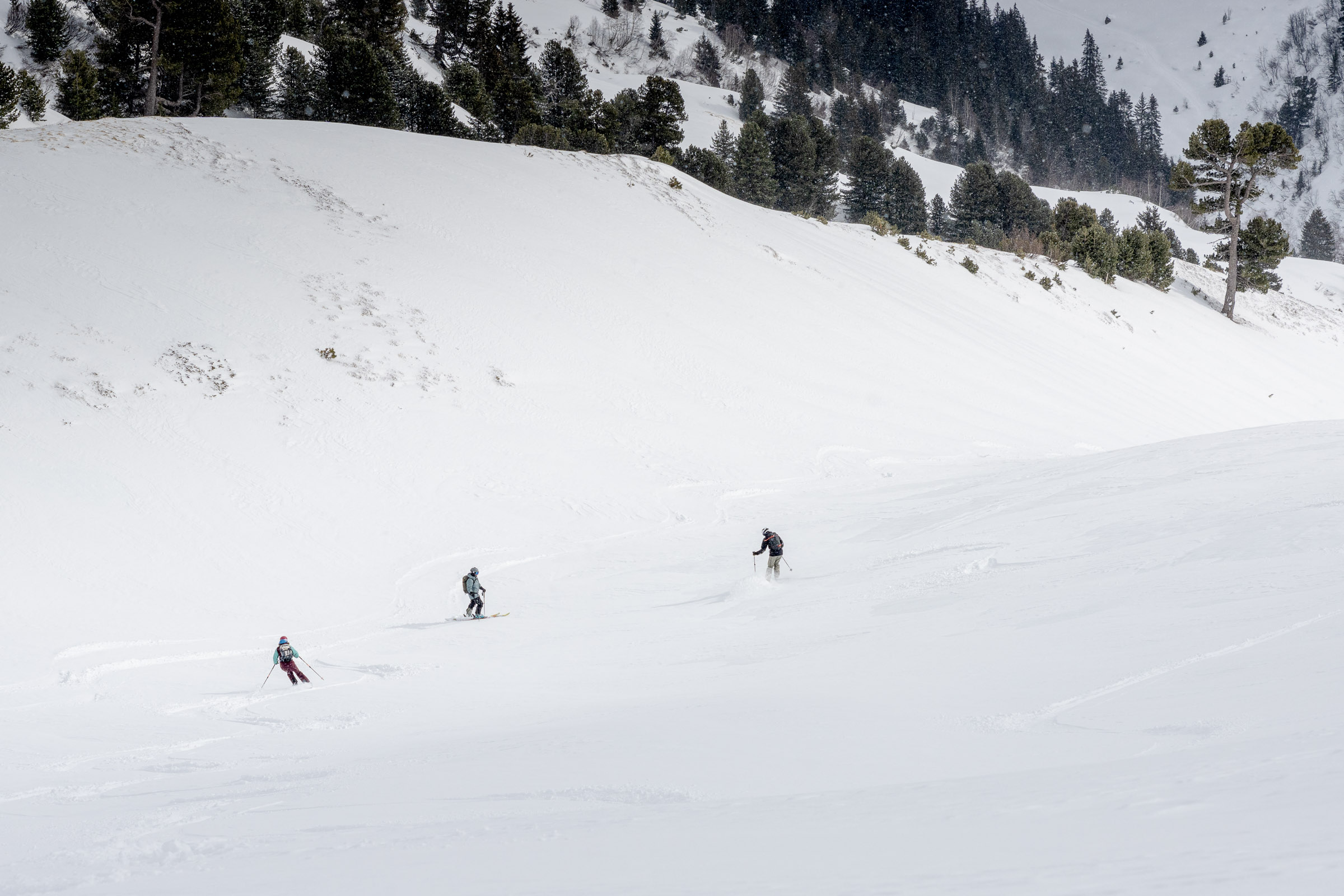
Our group makes its way down a backcountry line.
The theme of the event in St. Anton was freeriding, and the variety of courses offered was simply astounding.
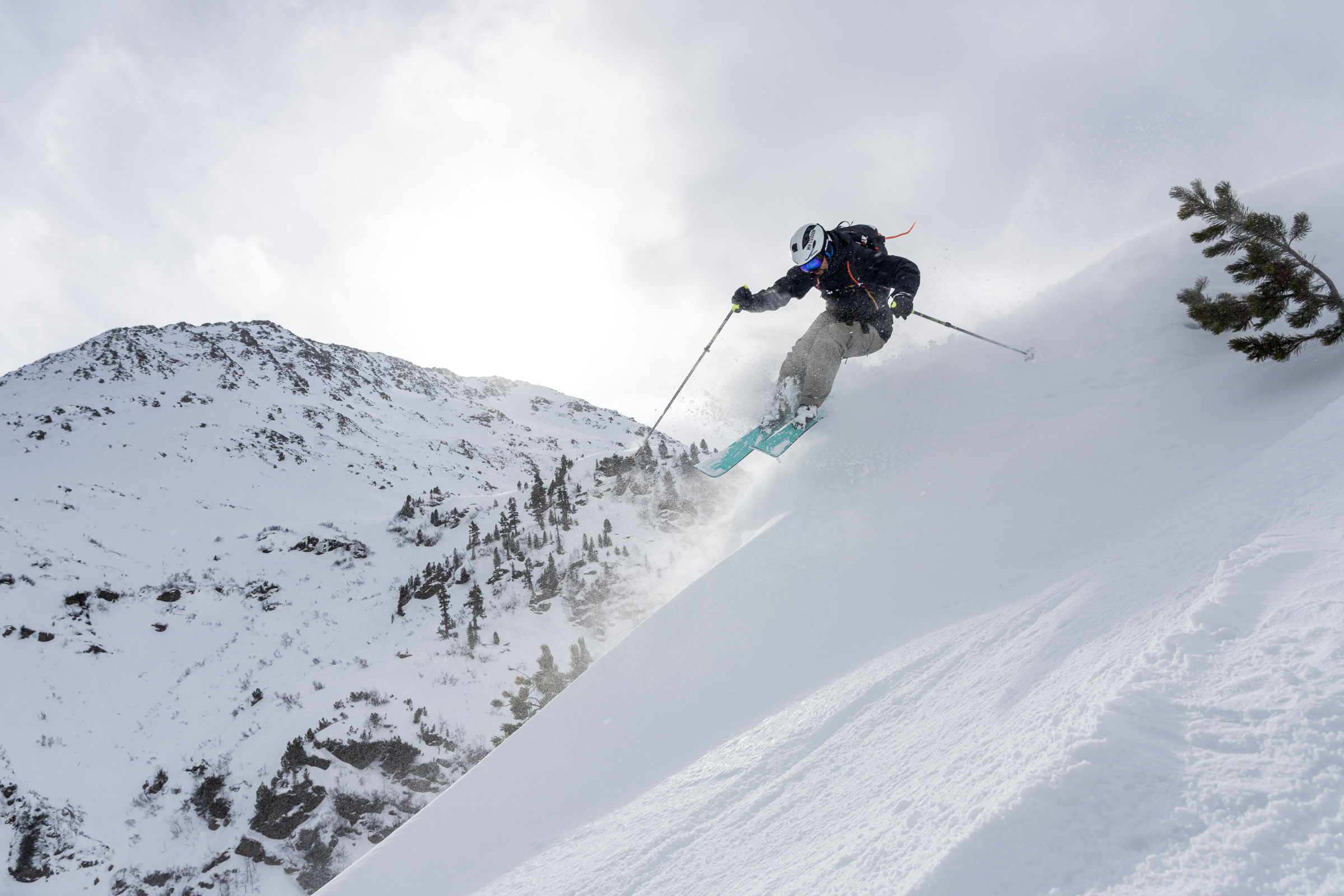
Joi Hoffmann in action.
When I was invited to report about the Arc'teryx Academy Freeride St. Anton, I decided for one ski-oriented course and one fundamental class to get a good mix. My Academy experience began with the "Big Mountain Freeriding" course. It turned out to be the perfect choice, since Saturday was the sunniest day of the weekend. As it turned out, this course was also the most popular, so the big group of powder hounds was split up between three different guides. I ended up following freeride legend Stian Hagen, who is also an old friend from my ski-bumming days in Chamonix. Although our group was technically the "mellow" class, that didn't hold us back from chasing some exciting lines.
We were also joined by Arc'teryx athlete Johannes "Joi" Hoffmann, who provided local knowledge and served as model for my ski photography. As I mentioned earlier, the conditions were challenging, but with the combined expertise of Stian and Joi we managed to bag some really good runs, making Saturday one of my better ski days of the season so far. The rest of the group also seemed pretty stoked. After a nice backcountry run off Albona into the Verwall Valley, where we had to take the bus back to St. Anton, we went to a restaurant to grab a quick coffee. When the bus came before we had even ordered, Stian suggested that we wait for the next bus. But the whole group voted to take the bus straight away, skipping the coffee break to get more skiing in.
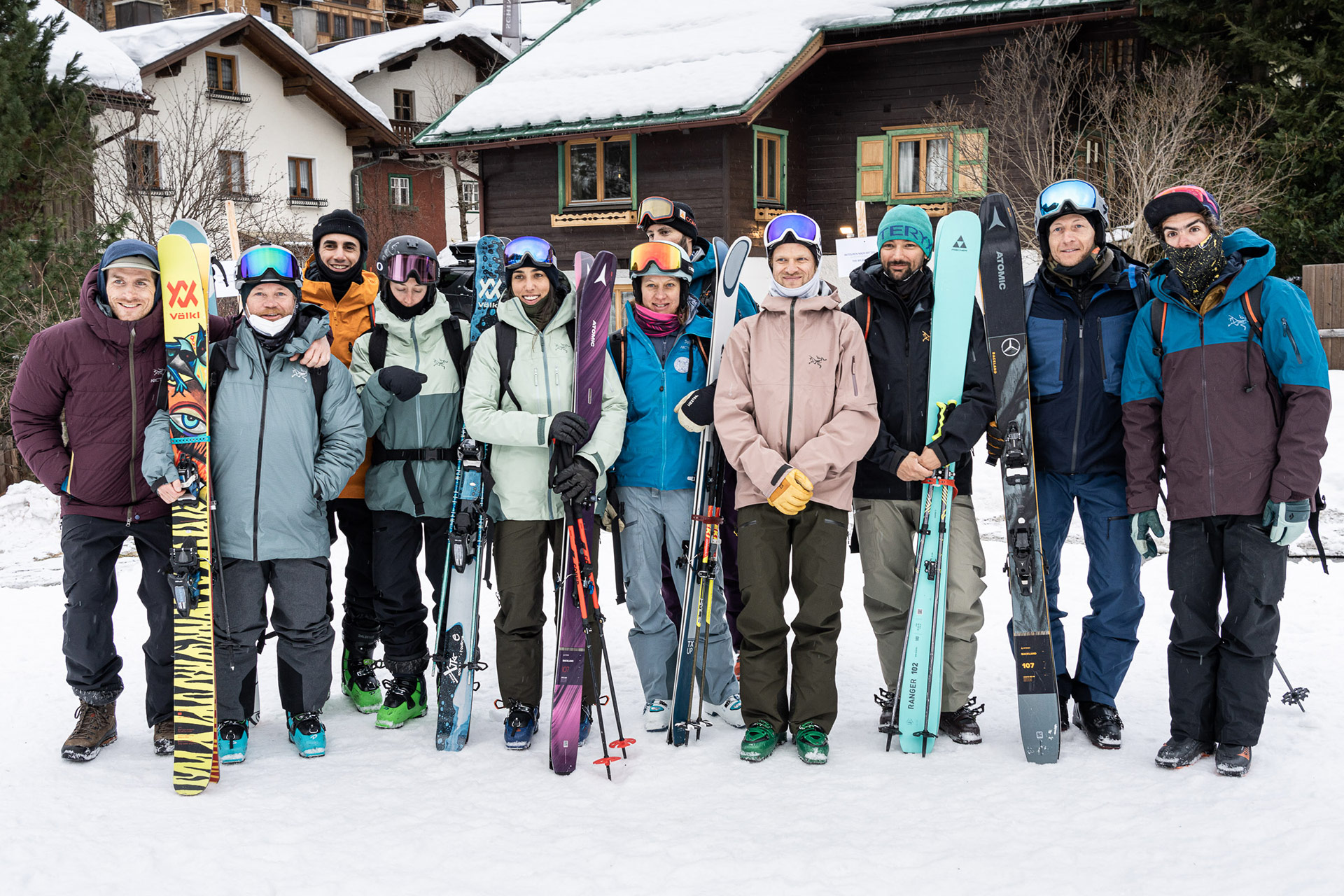
Arc´teryx athletes here to show us the ropes—sometimes literally.
Sunday provided some rest for my legs, but got my arms tired instead with shoveling. My first aid course started with a theory lesson in a cafe in town. Our instructor, Benjamin Zörer, began by pointing out some of the peculiarities of first aid practices on the mountain, as opposed to the more everyday environments that are usually the setting of a first aid course. More than anything, it showed me that I should take a basic first aid course sometime soon, since my last training in that field was a long time ago. Benjamin also talked us through the first aid kit that he carries when out ski touring or freeriding, and had plenty of valuable tips on what to pack and what might not be necessary.
After the introduction we went up on the mountain, found a sheltered spot with some soft snow and did some practical training. First we learned how to stabilize an injured person on a slope, and pack that person in a bivy sack to be transported off the mountain in case the helicopter can't fly due to weather. We also learned how to use a rescue blanket to protect someone from hypothermia. Finally, we built a snow cave, necessary in cases when you can’t get off the mountain and rescue by helicopter isn’t possible. It was a lot of work, but it was also surprising how fast you can shovel a cave that provides shelter for several people when you exactly know what to do.
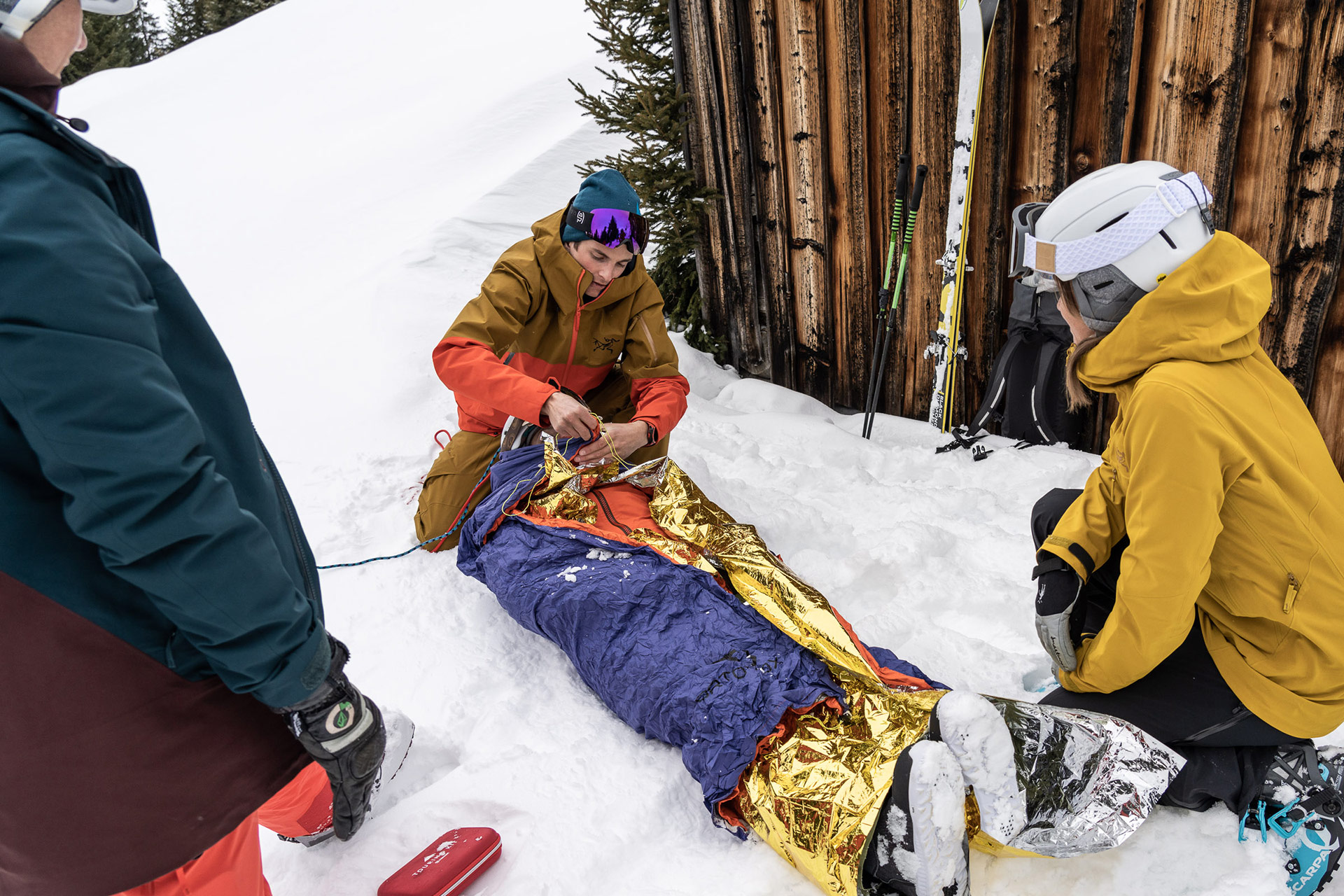
Benjamin Zörer demonstrates how to pack someone in a bivy sack during the first aid clinic.
Nowadays it's normal to practice your rescue skills in case of an avalanche burial, but the skills that may be needed once you’ve dug someone out, or if someone is hurt because of a bad fall, are often overlooked.
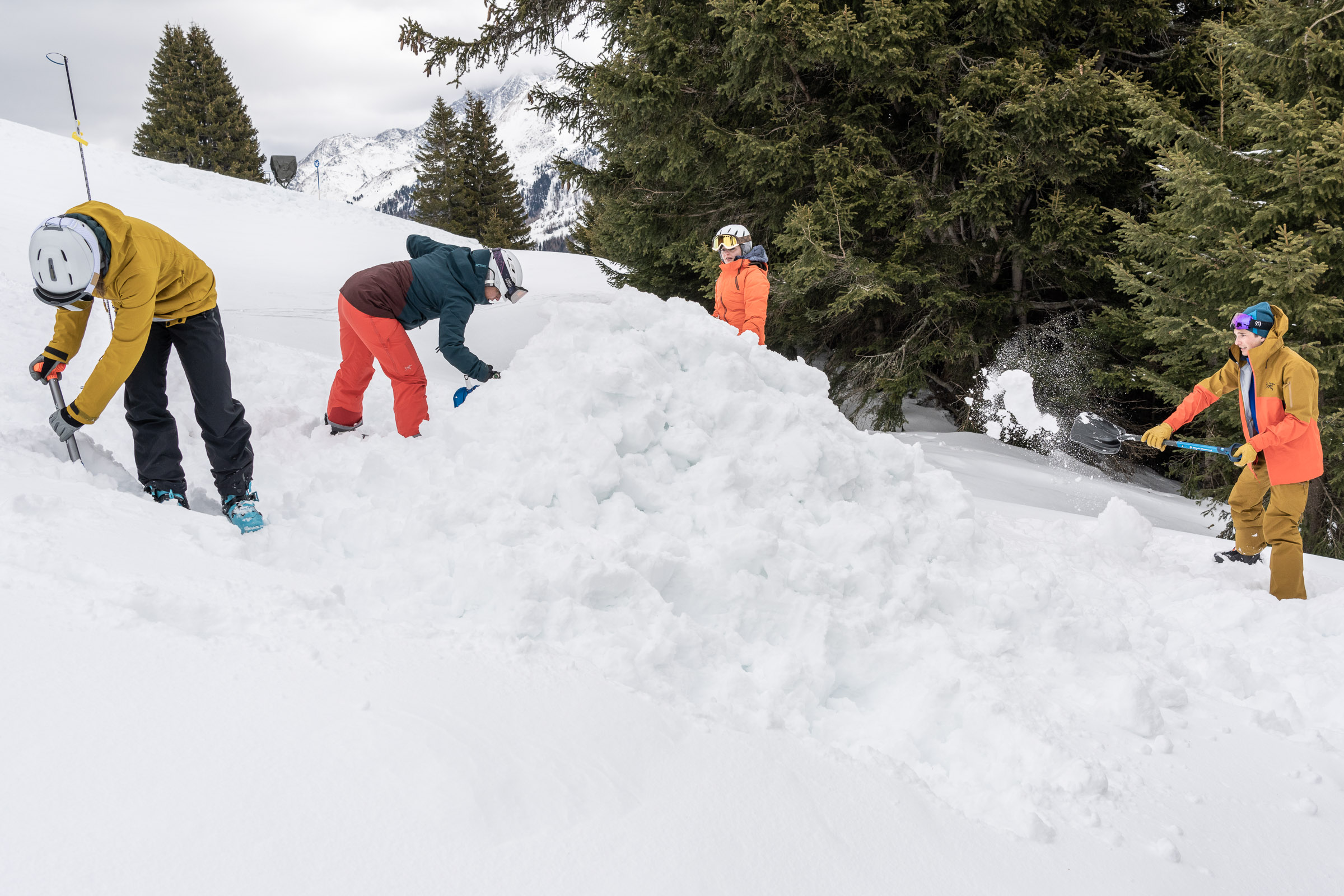
Knowing how to dig a snow cave quickly might not sound like first aid, but it could still save a life.
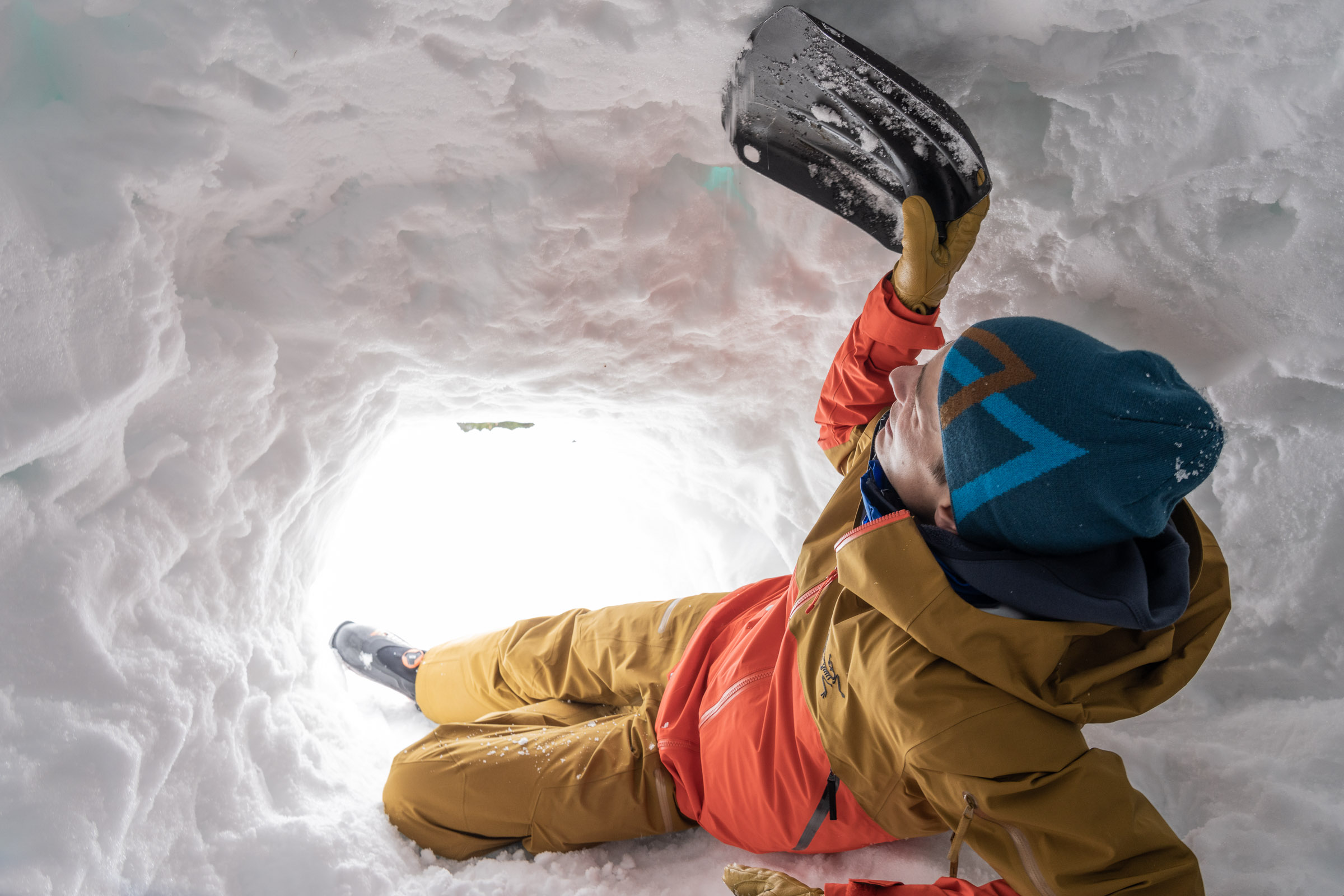
Benjamin Zörer puts the final touches on our cave.
In retrospect, the first aid course not only provided me with some nice imagery for this article— one big reason that I chose this option—but was also a much-needed reminder that I need to educate myself and practice more in this field. We had nice conditions during the class, but the chances are that when you really need to perform first aid, conditions will be much nastier. Nowadays it's normal to practice your rescue skills in case of an avalanche burial, but the skills that may be needed once you’ve dug someone out, or if someone is hurt because of a bad fall, are often overlooked. If you are regularly skiing in the backcountry, it's essential to participate in a mountain-specific first aid course. Unfortunately, those offers are hard to find—a paucity that the Arc'teryx Academy aims to address.
In sum, I had a blast at the Arc'teryx Academy Freeride Edition. It was lots of fun and I met nice people, including some old friends that I haven’t seen for quite a while due to the pandemic. Most importantly, I learned some valuable things that will come in handy on my future skiing adventures. I'm sure I wasn’t alone in this, since everyone else I saw over the weekend seemed happy with the event. All in all, the Arc'teryx Academy in St. Anton hosted 110 participants from several different countries, who engaged in 30 clinics over two days, led by 20 mountain guides and 10 additional athletes from both the Arc'teryx team and the local ski and mountain schools. All of that added up to one big success.